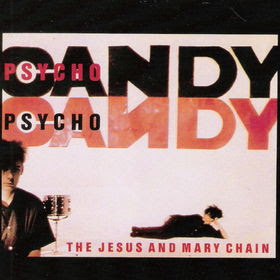Recently, a Brazilian ESL student named Carlos asked me if I liked Audioslave. After I responded "No, I didn't", he acted like I had just cursed the holy bible. Evidently, this album/band fared well in Brazil. This was the inspiration for this entry.
So, this is my first "suggested" album for this project. If you would like to suggest album titles for me to listen to, send them to me via the comment section of this or any other entry or to mediahobo@gmail.com
WHY I NEVER GOT AROUND TO LISTENING TO
THIS ARTIST/ALBUM
- When you are, as David Mamet once eloquently wrote, "young, dumb, and full of cum" and the significant music movement of the day reflects your naive values and aesthetics, that is called a perfect storm. In the early 1990s, I was one of those goofs with long, stringy hair, dressed in the thrift store-chic uniform of knee-length shorts over some flannel long johns, a pair of 10-hole Doctor Martins, and a plaid, button-down shirt. I was pretty much the textbook grunge kid, angst and peach-fuzz goatee included.
- Musically, two significant players for me during this time were the political funk-metal combo Rage Against the Machine, and Seattle's sludge rockers Soundgarden. And I was a mark for both bands! During my years at Humber College, where I double-majored in advertising and euchre playing, I would practically injure myself (and anyone in my vicinity) while “dancing” to Soundgarden’s “Jesus Christ Pose” and Rage’s “Killing in the Name of…” during Thursday night pub nights, much to the chagrin of Brian Wicks – my oft pub night partner-in-crime – who would usually just laugh at me while nursing his rye and cokes.
- When both bands played at the 1992 Lolapalooza festival at Molson Park in Barrie, Ontario, I was among the knuckleheads in the steaming-hot mosh pit - while wearing Todd Atkin’s paint-covered leather biker jacket no less – as Rage Against the Machine bombastically told the establishment to go fuck themselves. I was also one of the many of those lauding Soundgarden later that same day, when they performed a cover of thrash band Body Count's controversial song "Cop Killer" in protest of record company Warner Bros. banning the track from Body Count’s self-titled debut record. At twenty years old, I thought all that shit was pretty righteous. But ten years later, when a glut of over-stylized bands (many of which Rage Against the Machine and Soundgarden help begot) were churning out irrelevant schlock rawk, a supergroup consisting of three parts Rage Against the Machine and one part Soundgarden sounded about as appealing as a supergroup consisting of three parts Guns N Roses and one part Stone Temple Pilots…
WHAT I KNEW ABOUT THE ALBUM BEFORE
THIS PROJECT
- The only time I'd heard Audioslave prior to this project was in a car driving through Christmas traffic in Manila, Philippines in 2002 with Raymund Marasigan. The radio was tuned to now-defunct alt-rock station NU107 and "Cochise" was playing. My only memory of that moment was saying to myself "There's a reason I stopped listening to Rage after their debut record ( 1992), and Soundgarden after their Badmotorfinger (1991) album..." I equate that memory to seeing an ex-lover at a party after ten years and feeling rather uncomfortable about it.
- I am not one who pines for the bands I grew up with to stay the same 20 years later, like those who go to a Styx and REO Speedwagon concert just to hear the hits. Hey, I ain't judging. If seeing a Styx and REO Speedwagon show gets you off and you have a great time, fantastic, the more power to you. But it was not my intention to listen to this album and hope it would sound like Rage and Soundgarden circa 1992. Quite the contrary. I enjoy embracing the musical growth and progression musicians and songwriters go through. I think it is vital for those who love/play/study music to strive for change (except if you are AC/DC, who have been kicking ass while playing the damn same record since 1974).
- That being said, there was a sense of familiarity to the songwriting on Audioslave that made me feel nostalgic, so some of the album registered with me. If I may revisit the analogy of Audioslave being like an ex-lover, I do recognize why I was attracted to them (or at least the components of the band) back in the day: they were intense, heavy and enthralling. Do those things affect me the same ways now as they did then? In some part, yes. That's why some of the sludgy, monster guitar riffs on Audioslave had me doing the chicken neck, specifically "Cochise", "Set if Off", and "Bring Em Back Alive". Yet, there were also things about the album that annoyed me somewhat, specifically Tom Morello's guitar playing. While Morello is a decent axeman, I never was really into his style even during the Rage days. And what's with the acoustic guitars on this album?
- Bottom line: Did I dig Audioslave? Not really. Would I listen to other Audioslave records based on this one? Nope.
Previous Entries









